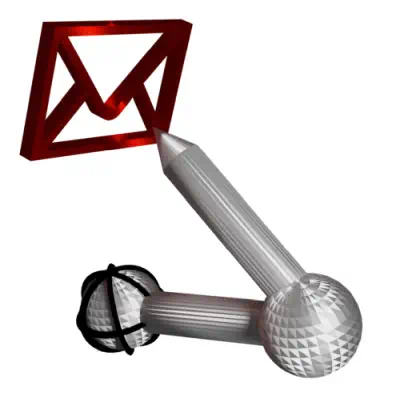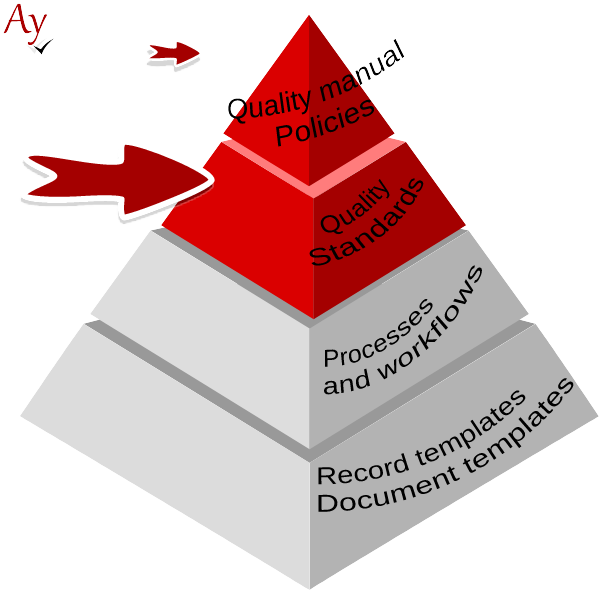AyMINE – Technical documentation
Modules
Integration with ERP Abra Gen
 Task, project & quality management
Task, project & quality management
Manager approval with the task report
Why some data can't be deleted
GDPR and record of qualifications
Qualification of user or contact
Right to Manage Qualifications
Adminitration of areas, projects, calendars
Failure Analysis for an Individual Property of a Component or Process
FMEA – Probability of Detection
FMEA – Probability of Occurrence
 Task, project & quality management
Task, project & quality management
Administration of the Task Management Module
System rights for the task management module
Improvements and Preventive Measures
Methodology and Quality Management systems
What makes up the methodology / SMJ
Problems, tickets and their management
Collaborative Resolution of Multiple Problems
Customer Service Response Generation
Incident and Quality Issue Management
Objects affected by the problem
Problems, Incidents, Helpdesk Tickets
Return project plan by baseline
Sample tasks and methodologies of the area
Effect of the task on the right to modify the attached object
The person responsible for the task
Working procedure – task definition
Management of responsibilities - RACI Matrix
Objects related to the task pattern
 Contacts and directories module (CRM)
Contacts and directories module (CRM)
Address book list and management
Directory or people and companies
Order overview for customer groups
 Contacts and directories module (CRM)
Contacts and directories module (CRM)
System Permissions and CRM Module Settings
Send bulk messages in compliance with GDPR
How to correctly forget a person's details
Unsubscribe and set preferences
for bulk mail
 Web management and automation
Web management and automation
Receiving a message from the web
Human resources
Personalistics – User Permissions and roles
Human Resources module security
Manage department / division data
Overview of Personnel Information for pracov# Employment Contract
Synchronizing staff and system users
 Products, assets and sales
Products, assets and sales
Creating and processing orders
Manage the Property & Business module
Why are the Quality criteria usefull
Managing Finance
Metrics and Measurements
Work summaries from generated data
Technical Modules
Sabre plugin module
Enterprise Architect connector
Database link to Enterprise Architect database
Enterprise Architect connector
System Modules
 The AyMINE Framework Module
The AyMINE Framework Module
AyMINE — Tips for Mobile Usage
Configure how your system looks and works
Gestures and Keyboard Shortcuts
More about how the system works
Private notes and tags for objects
Overview of Modules and Record Types
Directives and Policies
A directive is an internal document that puts into practice the obligations of the company, but also the philosophy and strategy set by the owners and management of the company.
- What all the Directives are
- Workflow vs. directives
- Hierarchy of directives
- Additional notes
- Directive vs. obligation

Directives and Policies are an integral part of every quality system and corporate governance system. They are also part of the methodologies administered by AyMINE
What all the Directives are
Directives are all internal normative documents by which an organisation sets rules of conduct, activities, competences or qualifications. Their names may vary, but in the case of the most common quality standard, ISO 9001, terminology is used:
- The Quality Handbook – in fact it is an umbrella directive of the highest level
- Quality Policies
- Directives
AyMINE has a uniform designation "directives" for the above levels, but within a customer-defined designation it is possible to clearly distinguish the individual designations
Operational Directives
Often operational, temporary regulations are also needed, e.g. director's orders, organisational decisions, etc. These regulations can also be published in AyMINE within the directives. In order, however, it is important to create your own methodology for these operational regulations.
Workflow vs. directives
The lowest level of quality system documentation is often workflow. AyMINE for workflow uses model tasks, on the basis of which the worker can be given an assignment directly as part of the assignment. While it is also possible to create workflow in AyMINE, it is advisable to include a maximum of operational instructions for a specific activity directly in the assignment of the model task
Hierarchy of directives
In AyMINE, it is possible – and advisable – to organize directives hierarchically, as is also recommended within quality standards.
The recommended structure in AyMINE is:
Quality manual as a standalone directive.
Policies as a top-level directive
Policies specifying rules for specific areas such as subordination directives under policies
Sample tasks as binding procedures for specific activities and tasks
Workflow as documents under directives only in cases where it is not advisable to use the model task. A typical case where procedures are advisable is
- Guides for activities that are not carried out on the basis of a specific task
- Guides for activities carried out under multiple different model tasks.
For more about the model tasks, see here
Additional notes
Policy vs. directives
Policies_ are by default more broadly drafted and contain general principles and objectives for a given area.
Guidelines_ on the other hand are more specific and define specific measures by which objectives set in policies are achieved.
Link between model tasks and directives
By default, directives and model tasks are together in hierarchically organized documentation. In AyMINE, a model task cannot be "classified" under a directive because it stands alone and separately. However, within a model task, it is possible to assign the relevant directive by a link and refer to it. For each model task, it is thus clear to which directive it refers and vice versa, for directives, within the links, model work tasks are seen to fulfil them in practice.
Directive vs. obligation
In AyMINE, not only directives, but also obligations are part of the methodology. There is a significant difference between the two objects:
Obligation Is an external regulation that tells a company how to behave, what to do or not do.
Typical examples of obligations are laws or norms.
Directive is an internal document that puts into practice the company's external obligations, but also the philosophy and strategy set by the company's owners and management.
Logically, obligations imply directives and possibly model tasks. On the contrary, the obligation is not affected by internal directives, the dependency is one-sided.